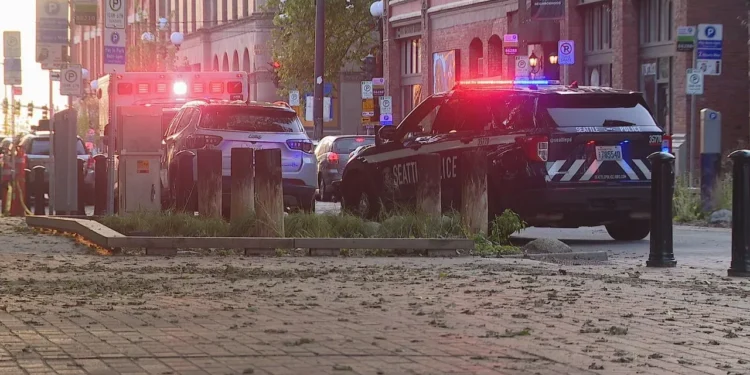No two neighborhoods are alike when it comes to perceptions of public safety, and a survey in Seattle is measuring those differences to help police and city leaders shape crime-fighting strategies.
“Seattle is the only city that I’m aware of that has consistently for 11 years collected data on community perceptions of public safety,” said Seattle University Professor Jacqueline Helfgott, whose team at the Department of Criminal Justice, Criminology & Forensics administers the annual Seattle Public Safety Survey.
Helfgott works with Seattle University graduate and undergraduate students to analyze the survey results to pinpoint top crime concerns as well as perceptions of public safety at the citywide, precinct, and neighborhood levels.
“The reality of crime is that it is a combination of people’s perceptions of crime and actual incidents or crime statistics,” Helfgott said. “In many respects, people’s perceptions of crime matter more than the actual incidents of crime.”
The results help shape the Micro Community Policing Plans for each of the city’s 58 neighborhoods, which Seattle police use to tailor their patrol responses. When compared alongside crime data, the community perceptions that the survey measures can give a more accurate picture of the impact crime has on an area, according to researchers.
At the end of the survey, participants are invited to share any additional observations they have about their communities, which researchers then group into themes.
“The last two years, traffic safety has been the number one top concern citywide,” Helfgott said. “Gun violence and youth violence rose up last year as a theme that was somewhat different than prior years.”
The survey is open through November 30 to anyone who lives or works in Seattle. It takes about 20 minutes to complete and is available in several languages, including Arabic, Chinese, English, Korean, Somali, Spanish, and Vietnamese.
Survey results will be provided to the SPD ahead of community-police dialogues scheduled for March–August 2026. This can provide talking points for a series of discussions involving community members and police staff.
The 11-year continuity of the Seattle Public Safety Survey creates longitudinal data allowing researchers to track how crime perceptions evolve over time, identifying whether concerns are temporary reactions to isolated incidents or sustained trends requiring policy interventions.
Helfgott’s observation that perceptions matter more than actual crime statistics reflects criminological research showing that fear of crime influences behavior, where people go, when they venture out, and which neighborhoods they avoid, regardless of whether statistical risk supports those concerns.
The Micro Community Policing Plans tailored to each of Seattle’s 58 neighborhoods acknowledge that crime patterns and community priorities vary dramatically between areas, with property crime dominating concerns in some neighborhoods while others focus on drug activity, homelessness, or traffic safety.
Traffic safety emerging as the top citywide concern for two consecutive years represents a shift from traditional crime categories, reflecting growing frustration with dangerous driving, pedestrian deaths, and inadequate infrastructure that residents increasingly view through a public safety lens.
Gun violence and youth violence rising as distinct themes suggests community awareness of trends where younger individuals become both perpetrators and victims of firearm-related crimes, a pattern Seattle has experienced alongside many urban areas nationally.
The survey’s availability in seven languages, Arabic, Chinese, English, Korean, Somali, Spanish, and Vietnamese, ensures immigrant communities with limited English proficiency can participate, addressing historical underrepresentation of non-English speakers in public safety planning.
The March–August 2026 community-police dialogues using survey results create accountability mechanisms where SPD must address concerns residents identify as priorities, potentially reducing disconnect between police activities and community expectations.







